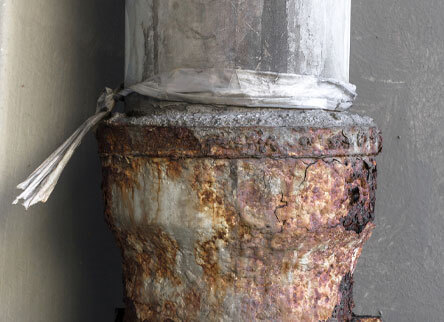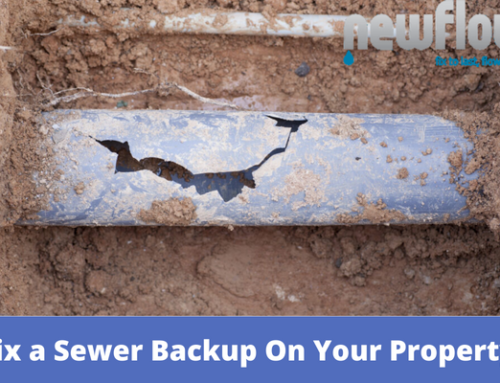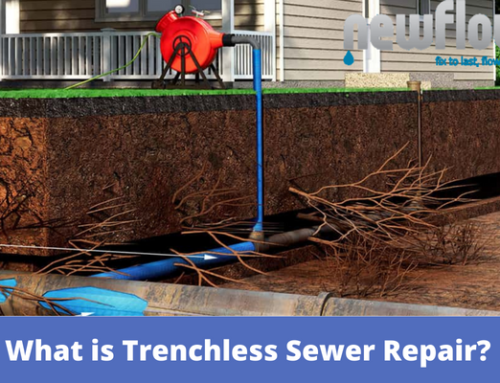4 Ways to Fix a Rusting and Leaking Cast Iron Sewer Pipe
Does your home have cast iron sewer pipes?
Most homes built before the 1970s were made with cast iron due to its strength and longevity. PVC had not even been invented yet and cast iron was the go-to water and sewer piping solution.
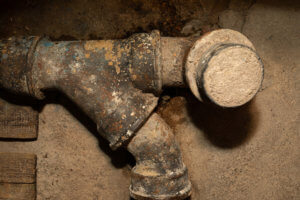
Iron rusts when exposed to moisture or oxygen, causing them to leak and fall apart.
If you are unsure if your home has cast iron sewer pipes, you can schedule a CCTV camera inspection with us at New Flow Plumbing. It’s a non-destructive way of finding out what sort of pipes you have and what’s going on inside. There’s no digging involved and we put anything we take out back in.
Signs of rusting and leaking cast iron sewer pipes
There are many reasons why your cast iron sewer pipes are beginning to fail. First off, all iron rusts when exposed to moisture or oxygen. Your sewer pipes are going to be constantly running waste and sewage, causing them to rust and corrode.
If your house has been built before the 1970s, chances are you have a few trees on your property that have lived long before that. With old large trees come large and invasive roots. Those roots will begin to reach and touch your pipes, even breaking inside them to cause problems.
- Odors that smell like sewage.
- Slow draining and clogging in your pipes.
- Mold growing on your walls or floors.
- Extra green grass and increased growth.
- Cracks in your foundation.
- Rodent infestation (rats and mice).
- Insect infestation (cockroaches, palmetto bugs, and flies.)
Should you repair or replace your cast iron pipes?
You may think that just replacing old pipes is the faster and cheaper solution to failing cast iron pipes. If you cut out a leaking or rusted section of pipe and replace it with PVC, you now have two ends that will leak soon. The cast iron on each side will continue to crumble or crack and break.

Trying to fix just sections of cast iron pipes can become a hassle.
If we were to attempt to repair a section of rusted cast iron sewer pipe, we would just keep on digging to find where the damage ends, only to find out that it just keeps going! Now you’re digging up your yard and spending countless hours trying to find the end to the problem. Repairs can be compared to a band-aid fix.
We highly recommend replacing the cast iron sewer pipes. New Flow Plumbing can restore your plumbing with brand new efficient piping.
How to get your sewer pipes working again
1. Hydro-jetting
Not long ago, clogged sewer lines were snaked using long, steel augers. With hydro-jetting, just as the name suggests, we use high pressurized water to clean out clogs. We can even remove small tree roots in the pipe. We will use hydro-jetting if the pipe’s structural integrity is still intact. If not we will use the next steps.
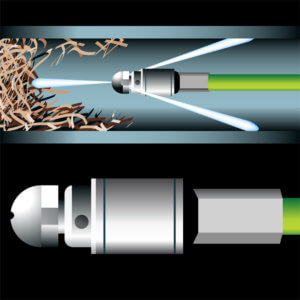
We first inspect your pipes with a CCTV video camera to find out what’s blocking your pipe and what needs to be removed beforehand. After we find an access point (that could be a cleanout or toilet) we insert the self-propelled hydro jet and it flushes away any debris. After the pipes are cleaned and cleared, we do another CCTV inspection to ensure the pipe is back to normal.
If the pipes have lost their structural integrity, we will just use hydro jetting to clear obstructions for the new pipes. See how we do that below!
2. Pipe bursting
If a pipe has lost its structural integrity or has a straight run, we will use pipe bursting instead. It has some limitations that make it more ideal for straight runs of pipe (the HDPE material would have trouble navigating bends in your sewer). HDPE is designed to last up to 100 years!
Again, we perform a CCTV inspection and see how the pipe is holding up. Next, we find our two access points, one on each end of the pipe, typically in your yard. The brand new HDPE (high-density polyethylene) pipe is attached to a winch with a cone-shaped bursting head and pulled through the damaged pipe.
The damaged pipe is broken apart as the new pipe takes its place. We perform another CCTV inspection to ensure everything is completed and then fill in any pits or reinstall any fixtures we removed.
3. Trenchless sewer pipe lining
Also called structural pipe lining, or cured-in-place lining (CIPP), sewer pipe lining involves a special, epoxy-impregnated liner to create a new pipe directly inside your old one. CIPP is designed to last up to 50 years!
We perform a CCTV inspection to see what’s going on in the pipe. If it is not falling apart and maintains its structural integrity, we can line the pipe. Then we use hydro-jetting to clear out any debris, as explained above. Next involves the actual lining.
We find two access points and feed in a felt liner (cut for the pipe’s dimensions) and saturated with a special epoxy and then insert it into the damaged pipe. A bladder inside the liner is inflated and pushes the epoxy against the walls of the pipe. After the epoxy cures, the bladder is removed, and BOOM! you have a brand new pipe within your old one.
Read more about: Is Trenchless Sewer Repair Worth the Cost?
4. Conventional sewer repair
If this is the case, we will use conventional sewer repair methods.
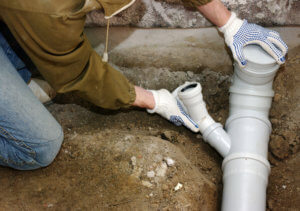
If a pipe is too damaged, we will use conventional sewer repair methods.

